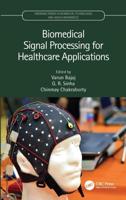Publisher's Synopsis
This book presents a new framework to improve the integration of exoskeletons in hemiparetic patients. The idea is to reduce potentially damaging compensatory strategies in the non-paretic leg, by ensuring a proper technology embodiment of the robotic exoskeletons in the nervous system. Upon reviewing control strategies for partial robotic exoskeletons applied to human gait, the book introduces robotic exoskeletons control algorithms, which were developed with the intention to promote gait symmetry by assisting the affected limb of hemiparetic patients according to the movement of the non-paretic leg. This new paradigm aimed at promoting the device's embodiment was expected to counteract the compensation mechanisms, which would become unnecessary and thus disappear. The control strategy relies on the gait phase estimation of the sound leg calculated using an adaptive frequency oscillator and was evaluated on post-stroke patients affected by hemiparetic gait, and the results are described in this book. All in all, this book offers a timely snapshot on control strategies for post-stroke robotic gait assistance. It also presents new findings concerning the role of robotic controllers in the embodiment of such devices, and their implications for new assistance paradigms for people with neurological gait disorders.












